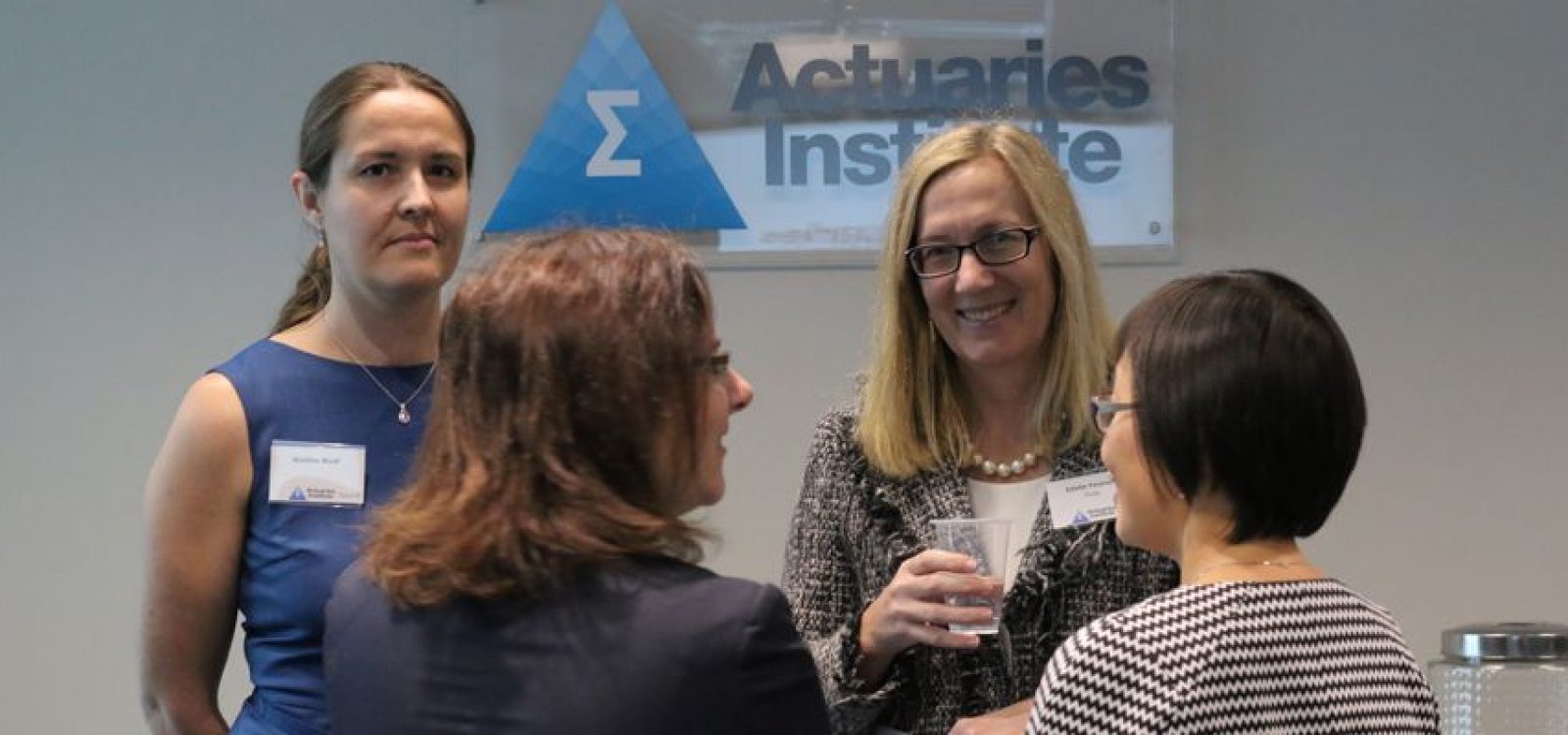
Sisters Are Doin’ It For Themselves…
President Estelle Pearson looks behind the numbers to kickstart conversation on gender diversity in the actuarial profession.
One of the objectives that I set myself at the start of the year was to do something to encourage our female members to be ambitious about their careers. Why, you may ask? What do the Institute’s own statistics on gender diversity show? Well here is how we look.
| Female | Male | |
| Banking | 31% | 69% |
| Data Analytics | 35% | 65% |
| Education | 30% | 70% |
| General Insurance | 36% | 64% |
| Health Insurance | 38% | 62% |
| Investment & Funds Management | 17% | 83% |
| Life Insurance | 35% | 65% |
| Reinsurance | 31% | 69% |
| Risk Management | 37% | 63% |
| Superannuation | 32% | 68% |
| All Other | 31% | 69% |
| Total | 33% | 67% |
Around a third of our 4,300 members are women, and this is pretty consistent across the various practice areas – with the notable exception of investment and funds management, where less than 20% of members are female.
Looking at membership by age, there is a distinct change in the shape of our gender diversity over time.
| All members | Fellow | Associate | Student | |||||
| Age | Female | Male | Female | Male | Female | Male | Female | Male |
| 20-35 | 40% | 60% | 33% | 67% | 45% | 55% | 41% | 59% |
| 36-50 | 30% | 70% | 27% | 73% | 37% | 62% | 40% | 60% |
| 51+ | 11% | 89% | 10% | 90% | 17% | 83% | 0% | 100% |
| Total | 33% | 67% | 25% | 75% | 40% | 60% | 41% | 59% |
While women were only 10% or less of members 30 years ago (inferred from the proportion of female members over 50), they represent 40% of members currently under 35. I was however a little surprised to see that, even in this younger age bracket, only one-third of Fellows are women – suggesting either that our female members are taking longer to reach the Fellowship qualification, or are more likely to choose to stop at Associate level.
In terms of leadership positions at the Institute, women currently make up –
- 33% of Council members.
- 25% of the membership of Practice and Council Committees.
- 29% of the Convenors of Practice and Council Committees.
- 57% of Young Actuaries Program Organising Committees.
Our own statistics on diversity do not appear too shabby, although we still slip below the 30% ‘critical mass’ figure in some cases (this is the level at which diversity becomes more effective). However we work in industries where there remains a wide disparity between the sexes in terms of executive positions and pay; for example, I counted only three APRA authorised general insurance companies with a female CEO. And this is despite research that now concludes that having more women in senior roles is positively correlated to better company performance. Most large and even medium-sized organisations have established diversity committees, and some companies have set targets for female representation within the executive ranks. The Australian Institute of Company Directors launched a major initiative this year asking boards to ensure that 30% of their directors are female and urging the S&P/ASX200 companies to achieve this target by the end of 2018. So with an article in the press at least once a week on gender diversity, this seemed like an opportune time to do something within the actuarial profession aimed at our female members.
Following a discussion with the other women on Council – Jenny Lyon, Hoa Bui and Lisa Simpson – together with Institute Deputy CEO Elayne Grace, we decided to start with a couple of ‘Actuarial Women’s Forums’ in Melbourne and Sydney in June. We were fortunate to have the support of a number of female actuaries in influential roles agreeing to participate, and both the Sydney and Melbourne events sold out. Thanks to Angela Tong for her report on the Sydney event, which appeared recently in Actuaries Digital. Looking at the feedback on the events I took two key messages. First, there was almost universal demand for more events of this nature. Second, this should be the start of a conversation across our profession on diversity more generally.
The two women’s forums were an opportunity to bring together members from across our various practice areas which, given the ever increasing level of specialisation within the profession, happens much less often than in the past. I was part of two other important cross-practice events in May – the Insights session on the Role of the Appointed Actuary held in Sydney, and the Actuaries Summit held in Melbourne. As well as over 450 of our own members, the Summit drew Presidents or their representatives from six international actuarial associations. For those working outside the life and superannuation sectors I think that it is too easy to dismiss the Summit as not being ‘relevant’. As someone who has spent almost their whole career in the general insurance sector, I got a lot out of the plenary sessions (the economy, geopolitical risk and effective public policy to name a few of the topics covered) as well as the concurrent sessions I attended (the sustainability of hospital cover in health insurance, the early days of the National Disability Insurance Scheme, digital disruption, child protection and retail analytics). We can always do better of course; I know that David Bell has some views on the low level of representation of female plenary speakers and I have some ideas on broadening the content of the program even further, however I think that we start from a very positive place and the organisers of the Summit deserve our thanks and praise.
The Insights session on the Appointed Actuary (AA) role drew an audience of 160 across life, general and health insurance highlighting the importance of the AA role to the profession. While there has been a regulated role for actuaries in the life industry since the 1940s, the role is much more recent in general insurance (2002 in the wake of the HIH collapse) and health insurance (2004). The session followed from the work of the Life AA Taskforce, and at the urging of APRA who are undertaking a holistic review of the AA role across life and general insurance this year (and assumed the regulation of health insurers from 1 July). The session was a perfect opportunity for the profession to engage with APRA and to debate what the role of the AA was, is and should be. We will be setting up a discussion forum shortly to allow the profession to continue this conversation, and we will draw on this to provide input to APRA’s wider review of the AA role.
If you have any comments or questions on this article, my recent report to members on the June Council meeting or any other Institute matters, please don’t hesitate to contact me at estelle.pearson@actuaries.asn.au
CPD: Actuaries Institute Members can claim two CPD points for every hour of reading articles on Actuaries Digital.





